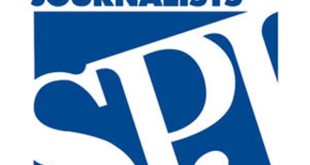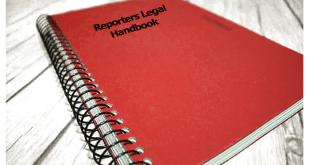4A: A Brief Course In Defamation
This section does not purport to be an explanation of the nuances of defamation law, and especially not of its defenses. It is solely designed to give you an idea of what types of publication can form the basis for a defamation suit.
Defamation is the publication of a false statement about a living person, a corporation or a group of persons small enough for its members to be readily identifiable. Nevada Ind. Broadcasting v. Allen, 99 Nev. 404, 664 P.2d 337 (1983). Defamation can be found in news stories, in newspaper headlines or broadcast kickers and introductions, and in printed or broadcast pictures. Try to look at each of these items, standing alone and in relation to each other, to determine if they become defamatory.
The common law distinguishes between defamation per se (obviously defamatory statements) and defamation per quod (which is not obviously defamatory, but becomes so under other circumstances).
The distinction is important because under the common law a slandered plaintiff could not recover for defamation per quod unless special damages were alleged and proven. A number of states have engrafted that distinction onto the law of libel. Nevada joined that group in the Allen case, supra.
A defamation plaintiff must always prove identification, publication, defamatory content, falsehood, damages and fault. Restatement of Torts (Second) §613. While all these elements are important in a defamation case, several are directly relevant to what you can do to prevent publication of defamation or to minimize harm when it is published.
Defenses To Defamation Claims By Private Figures
Like the previous section this sub-part is not designed to give you a complete course in defamation. Rather, it is intended to give you an idea of what sources you can rely on when writing or publishing a news story.
Lack of Negligence: Have you acted as a reasonably prudent reporter would in like circumstances? If so, the “fault” required by the United States Supreme Court in an action by a private figure, Gertz v. Robert Welch, 418 U.S. 323 (1974), will not exist.
Consent: Has the plaintiff given a competent and informed consent? If so, to the extent of the consent any defamation is privileged.
Truth: Is the gist or sting of the defamatory statement true? If so, you have a defense against the falsehood element of a defamation action, and under Art.1 §9 of the Nevada Constitution, an absolute privilege.
Official Reports: This is a conditional privilege applying to reports of official proceedings, documents, and statements from the three branches of government.
Fair Comment: This defense involves comment or criticism about persons, organizations or events, including artists, artisans and persons offering entertainment, whose actions affect the public. The privilege is limited by the following factors:
1.) The defamation must be a statement of opinion,
2.) It must be made without ill will,
3.) If based on facts, the facts must be true, and
4.) If discussing an artist, the comment must discuss the work and not attack the artist personally, although it can fairly imply qualities of the artist shown by the work.
4B: Avoiding Defamation
4B1: Spotting Defamatory Content
The first line of defense against defamation is the careful reporter and Editor. Generally, truth is an absolute defense against defamation, Ask yourself the basic question of reporting. Is this story accurate? Is it fair? The more careful you are, the less likely you are to produce defamation.
When the story involves material which is defamatory per se, you should be especially careful. A good test is to ask yourself, “Is this the sort of story I would want published about me?” If not, ask yourself, “Is there anything about this statement which causes me to doubt its truthfulness?”
As to any part of a story, including headlines, photos, cutlines, and introductions, look to see if taken alone that part might be defamatory. Is a photo reasonably subject to a derogatory misinterpretation? Does a headline fairly relate to the story? Asking questions at the copy desk may save you trouble later on.
4B2: The Role Of Your Lawyer
From time to time you will handle a complex or potentially defamatory story where your attorney can be a tremendous asset. Lawyers can assist in several areas:
1.) Your lawyer can function as a source to explain the legal system, interpret rulings or lead you to persons with expertise in a particular area of the law;
2.) Your lawyer can review stories to suggest ways to avoid defamation, to fairly present the facts, and to bolster evidence in support of the truth of defamatory statements; and,
3.) To the extent you have reasonably relied on your attorney as a source, you may be insulated against any claim that you do not meet the requirement of New York Times Co. v. Sullivan, 376 U.S. 254 (1964), that a public figure must show knowing or reckless disregard of the truth.
4C: What To Do When Defamation Occurs
The Proactive Approach
Retract And Apologize Before You Get A Demand
It should always be the policy of any ethical person to set right what they have done wrong. The Golden Rule applies as much to the press as to any other person or entity.
As soon as you realize that you have made an error of fact you should correct it. If that error is defamatory or potentially defamatory, you should not only correct it, but apologize for the error. Such a policy will not only stand you in good stead when a law suit is served, it will keep law suits from ever being filed.
What To Do When A Retraction Is Demanded
Under Nevada law, a defamation plaintiff may recover no more than special damage unless a proper retraction demand has been made on the publisher and a retraction has been refused. In order to provide that protection the retraction must be published within twenty days from receipt of the demand. NRS §41.331, et seq.
What A Retraction Demand Should Contain
Generally, the person making the demand should tell you what was said, why it is defamatory, what the true facts are, and how when and where they want a retraction published. NRS §41.336(2). If the demand does not contain all those elements it may be legally insufficient, but do not treat it as such. If a valid question is raised and you learn that you were in error, go ahead and correct the error and apologize. If the letter does not contain a clear or sufficient demand for retraction your lawyer should contact the person making the demand to clarify what is desired.
What a retraction demand cannot do is require you to phrase the retraction in a certain manner. As long as you comply with the law’s requirements for contents and placement of a retraction you need not use the particular language demanded by a potential plaintiff. NRS §41.337.
What A Retraction Should Contain
A retraction must make it clear that the fact complained of was actually untrue. Simply saying that a person has complained or alleges something to be untrue is insufficient. You should fairly set forth what was said, that it was untrue, and that you apologize for the error.
You should publish the retraction in substantially as conspicuous a manner as the original defamation. Try to publish to the same audience who received the original untruth. If the story was broadcast on the Monday news at 6:00 (unless time constraints forbid it) publish your retraction on the same day and time. If the defamation was in a headline, you may need a headline correcting the mistake followed by an appropriate story.
An example of a retraction might be:
Headline: This Paper Made A Mistake About John Smith
Last Friday we published a story saying John Smith was arrested for illegal possession of a still. The story was in error. We should have reported that John Brown was arrested for the violation. Mr. Smith was not arrested and according to the police is not a suspect or in any way involved in the case. We apologize for any inconvenience or distress our error may have caused to Mr. Smith.
The Lawyer’s Role In Drafting Retractions
When you learn of defamation you should immediately contact counsel. Your lawyer should review any initial correction preceding a demand letter, and should be involved immediately if you receive a retraction demand letter. A legally sufficient retraction is an extremely effective shield against a defamation suit; don’t give it up by failing to keep your attorney in the loop.
4D: Defending A Defamation Action
When you are served with a Complaint, notify your Editor and your attorney immediately. In the normal course you have only twenty days to answer the Complaint. Nevada Court Rule 12. If an extension is not obtained by your attorney, or an Answer or other response is not filed, a default may be entered against you.
On occasion the opposing party will give no extension and your attorney may need all that twenty days to investigate the case and prepare a response. Accordingly, it is very important that you notify your lawyer immediately.
Once you are aware that a lawsuit may be filed, be careful to preserve evidence. If you are contacted by anyone outside your paper about the case, refuse to discuss it and keep careful notes of what was said. The foundational elements for admitting evidence are essentially the same as those for a good news story. Record what was said, by whom, when, where and how (i.e. by phone, in person etc.).
If you have notes, tapes, video outtakes, etc., be careful to keep them safe. Your attorney will certainly want to review them with you.
In general, as the defendant in a defamation case, you can expect to see a process which proceeds as follows: 1.) Normally, before an Answer is filed, your attorney will file a Motion to Dismiss the Complaint. This is an attempt to defeat some or all of the allegations of the Complaint. For example, the Complaint may seek general damages for defamation, which would be barred by an adequate retraction. A Motion to Dismiss would try to get rid of that claim so that it would not even have to be answered.
2.) Once the court rules on the Motion to Dismiss your lawyer will file an Answer. The Answer sets out your admissions and denials of various allegations as well as your affirmative defenses. Affirmative defenses state a reason the Plaintiff cannot recover other than a denial that what he says happened. They may include the truth or substantial truth of what was published, lack of constitutional malice under the First Amendment, consent by the Plaintiff, and a host of other possibilities.
3.) Under certain circumstances the Answer may also set forth counterclaims against the Plaintiff, cross-claims against another defendant, or third party claims against someone outside the lawsuit.
4.) Following the filing of the Answer the parties generally engage in discovery. Since the reputation of the Plaintiff is a direct issue in any defamation case, discovery may be very broad, indeed. In addition, the Plaintiff will try to discover your notes and sources. They are privileged under the Shield Law, but the Nevada Supreme Court has held that you cannot refuse to reveal them and then present them at trial. Las Vegas Sun v. District Court, 104 Nev. 508, 761 P.2d 849 (1988). Accordingly, you and your attorney must make a reasoned decision whether to reveal notes and sources. That may depend on a number of factors including the potential effect on other sources and promises of confidentiality, as well as the general philosophical reluctance to give access to notes.
5.) When your attorney is satisfied with the amount of discovery obtained (often that will focus on the Plaintiffs damages) the next step will often be a Motion for Summary Judgment. That motion asks the court to decide that based on the uncontradicted facts shown by Affidavits and other evidence, you are entitled to win as a matter of law.
6.) If the Motion for Summary Judgment is not granted in its entirety, you will probably proceed to trial. Keep in mind that a trial is often only one step in a process which leads to appeals. Judges may allow Plaintiffs to do things with which Courts of Appeal disagree. Newton v. NBC, 930 F.2d 662 (9th Cir. 1990).
The entire process is long and often stressful and difficult. Try to keep as informed as possible about what’s happening. Feel free to call your lawyer and ask questions. Ask her or him to send you copies of everything that’s filed in the case. Ask for an overview of the strategy and tactics being used by your attorney. Those are things you are entitled to know, and you will feel better for knowing them. Above all, try to maintain a sense of humor and a sense of perspective. Things could be worse; you could have been charged with criminal libel.
 Nevada Press Association The best in Nevada journalism since 1924
Nevada Press Association The best in Nevada journalism since 1924



One comment
Pingback: Frivolous Lawsuit From Skurt Hairy’s – Equal Rights For Divorced Fathers E-Zine